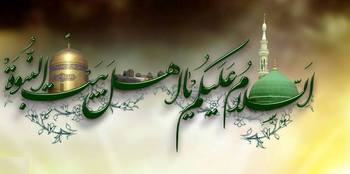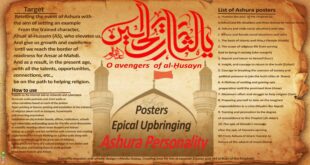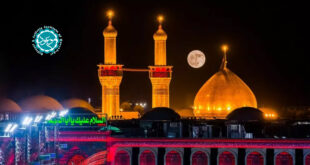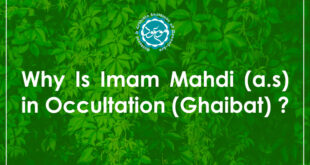The Makkan Society
The society at obscure Makkah where Prophet Muhammad [s] opened his eyes, was rife with vices and oppression. It was as barren as the harsh Arabian landscape, with declining morals, rising perversion, ignorance and poverty. Like the rest of Arabia it was polytheist in nature, deeply engrossed in the worship of a multitude of idols.
The Makkan society roughly speaking was divided into three classes as follows:
1.The Arrogant Wealthy:
In their hands was vested the wealth, authority and leadership of Makkah, and it was this class which vehemently opposed the Messenger of Allah and his call to Islam. They terrorised and forbade people from believing him, for fear of losing their unjust hegemony over Makkah. To this class belonged Abu Jahal, Abu Sufyan, Abu Lahab, Walid bin Mughira, Uqba bin Abi Moayyit, Aas bin Wael Sahm and others, who had built up large fortunes by oppression and foul means.
2. The Deprived (slaves and the oppressed):
This class was composed of the downtrodden like Ammar and his parents Yaser and Sumaiyya, Bilal the Abyssinian, Suhaib the Roman, Khabbab bin Arat etc., who all eagerly hastened towards the call of Islam, because they found it to be the truth and a way of deliverance from oppression, slavery and disbelief.
3. The General Public:
These were neither part of the landed oligarchy nor were subjected to slavery. They could well be termed the middle class. Affiliated to their respective tribal chiefs or clan heads they blindly followed the path chosen by their leaders.
Thus since the Islamic Da’wah (call) strives for justice and equality among the human race, removing the artificial barriers of class set up by ‘Jahiliyyah’, the tyrants and oppressors did all they could to stop its eventual spread. Sensing that its Monotheist message, preaching submission to the One and Only Creator and forsaking the worship of idols and man-made images, would bring an end to their domination over Makkah, the pagan Quraish, decided to gang up against Prophet Muhammad [s].
Birth and Ancestry
Muhammad [s] was born at Makkah in the year 570 AC. known in the annals of Arabian history as the ‘Year of the Elephant’ because of a miraculous event. That year Abraha the Christian governor of the Abyssinian King, who had already subdued Yemen, marched upon Makkah with a huge army of elephants. His intention was to destroy the Ka’aba and shift the centre of pilgrimage to San’aa, where he had built an imposing church. But the very moment Abraha’s awesome army was poised for the attack, the Almighty sent a swarm of flying creatures, who blackened the sky pelting the mighty force with pebbles, and within minutes destroyed elephants and warriors alike. Thus Almighty Allah humbled the arrogantly ignorant by means of an obscure creature.
Muhammad [s] was born on the eve of 17th of the lunar month of Rabi-ul-awwal and according to some versions on the 12th of the same month. His father was Abdullah the son of Abdul Muttalib the son of Hashim and his mother, Amina, was the daughter of Wahab. His grandfather Abdul Muttalib had many wives and children, out of whom Abdullah and Abu Talib were from the same mother. Thus Prophet Muhammad [s] was a scion of the noble Bani Hashim clan a sub-division of the large Quraish tribe, descended from Prophet Ishmael [a] the elder son of Prophet Abraham [a].
He was a posthumous child, as his father Abdullah had died three months before his birth, while on a visit to Yathrib (Madina). The birth of the orphan turned the grief of the bereaved family into unbounded joy, and none were more happy than his mother, Amina and grandfather Abdul Muttalib, who were in a state of shock at Abdullah’s untimely death. The family burst into happiness, slaughtering sheep and throwing a grand banquet for the Quraish, to celebrate the auspicious occasion. Makkah overflowed with joy as throngs of people flocked to Abdul Muttalib’s house to congratulate him on the birth of his grandchild.
The Upbringing of the Prophet
As was the custom in those days, babies of noble families were normally entrusted to the care of strong and healthy wet nurses, who not only gave suck but taught their wards manners and etiquette. The young Muhammad [s] was accordingly put under the care of a noble wet-nurse called Halima bint Hareth As-Saadiyah, who brought him up along with her own children; Abdullah, Eisa and daughter Shaima.[1]
After four years Halima brought back the child to his mother and grandfather. Everyone was happy as the toddler started to grow up into a pretty, sober and intelligent boy, marked out from the rest of the children by his suave manners and loved and admired by all.
Mother and Grandfather Die
At the age of six, his mother took him to Yathrib to visit her family. Umm Ayman their maid accompanied them on the journey. At Yathrib, the young boy saw the grave of his father, whom he had never seen in life. What a moving scene it may have been when mother and son, set eyes on Abdullah’s grave!
After a short stay in Yathrib they started back, but on the way Amina became seriously ill. The party stopped to nurse her but her condition became worse and finally she breathed her last and was buried at a place called Abwa, situated between Makkah and Madina. The child was naturally sad at loosing his only surviving parent, at the tender age of 6. Now he was an orphan on both sides and alone in this wide world. But Almighty Allah is Great and Omnipresent and He alone decrees destinies. Umm Ayman escorted Muhammad [s] to Abdul Muttalib, who was shocked on hearing news of his daughter-in-law’s sudden death. The doting grandfather took upon himself the task of bringing up the young orphan, never letting him feel the slightest discomfort. But there was yet another shock in store for Muhammad [s], for when he reached the age of 8, he lost his loving grandfather too.
Abu Talib Assumes Guardianship
Before his death, Abdul Muttalib instructed his son Abu Talib to see his orphaned grandson’s upbringing. Accordingly, Abu Talib gladly assumed guardianship of his nephew and took young Muhammad [s] under his roof. Abu Talib and his wife Fatimah bint Asad raised the orphan as their own child, never making him feel the slightest thought of being a destitute. They loved him dearly and he loved them in turn. In later years he was often heard saying that Fatimah bint Asad, (the mother of Imam Ali) was like a mother to him.
Notes:
[1] A deep affinity developed between the Prophet and his foster brothers and sister, and later in life they also accepted Islam.
The Prophet’s Marriage
Muhammad [s] grew up in his loving uncle’s house, blossoming into a handsome youth of exceptionally good character, which marked him out from rest of the young Makkans. He soon began to assist Abu Talib in trade and commerce and once accompanied his uncle’s trading caravan to Syria, ably revealing his talents and integrity. His honesty and reputation preceded him and sometime after his return to Makkah he took up a trading job with one of the wealthiest and noblest Quraishite women, Khadija bint Khuwailid. He accepted to work for Khadija and was entrusted with some money, with which he busied himself in commerce. He again travelled to Syria and made great profits for Khadija during the trip.
Naturally Khadija was pleased and soon came to admire Muhammad’s [s] intelligence and honesty. Eventually she offered her hand in marriage which was accepted by him. Muhammad [s] thus married Khadija and they lived a harmonious life full of love, co-operation and sincerity, sharing each other’s joys and sorrows. They formed a perfect husband and wife pair, the likeness of which is something rare in human history. When finally the Divine Message was revealed to Muhammad [s], the devout Khadija at once believed in her husband without ever expressing the slightest doubt. She was the first among women to accept Islam and subsequently put all her vast wealth and property at the Prophet’s disposal for the spread of truth and justice.
Khadija bint Khuwailid was from the Quraish tribe and was born and bred in Makkah. Even in the days of Jahiliyyah she was known among the Quraish women for her nobleness of character and virtue, that is why she was called by the Makkans as Tahera ‘the pure’. She married Muhammad [s], 15 years before revelation came to him from Allah. As long as she was alive the Prophet never took a second wife and even in later years of his life after numerous marriages, he used to cherish her loving memory and refer to her as the most beloved of his spouses. She endured with him hunger, poverty and calamities inflicted by the Makkan polytheists. She bore Muhammad [s] many children, all of whom except for Fatima [a] died in infancy, including son Qasim[2] from whom the Prophet’s kunya (agnomen) ‘Abul Qasim’ is derived.
Finally in the tenth year of the Prophetic mission, shortly after the small Muslim community quarantined by the heathens in Shaib Abi Talib had come out of the valley, Khadija breathed her last. It was a great tragedy for the Prophet. The year is known as the ‘Year of Grief’ in history because the Prophet suffered a further blow that year losing that other great benefactor, his uncle Abu Talib.
[2] Khadija bore the Prophet one more son named Taher; who also died in infancy. Later in life Prophet Muhammad [s] had another son named Ibrahim, through his Egyptian wife Maria Qibtia, who also died in infancy. Hence, the Prophet’s progeny survives today through his daughter Fatima and her two sons Hasan and Husayn who are the ancestors of all ‘Seyyids’ (descendants of the Prophet).
 Mouood Mouood English Edition
Mouood Mouood English Edition




